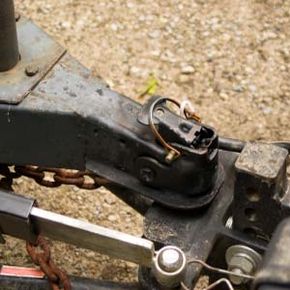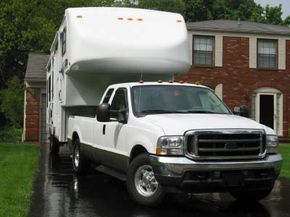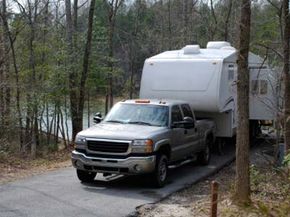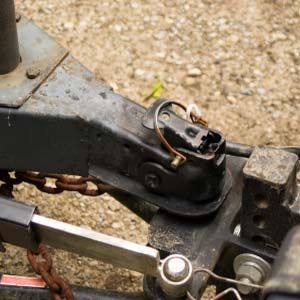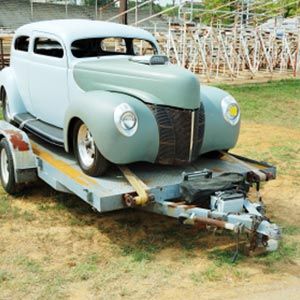Towing a vehicle can be stressful. Pulling the weight of another vehicle changes the way your own car, truck or SUV feels and behaves. You might even have to make some changes to your vehicle to tow another one safely. For the driver, perhaps the most stressful of all towing maneuvers is backing up a towed vehicle.
There are several issues you have to take into consideration when towing any vehicle. One of the most important is visibility. You may need to install larger side-view mirrors on your vehicle to improve your line of sight. Mirrors play a critical role whenever you have to back up -- you need to have a clear line of sight around both sides of the towed vehicle.
Advertisement
It's also important to make sure the vehicle that's doing the towing can handle the load. That includes reading the owner's manual to make sure you don't exceed towing weight limits. You should also make sure the trailer equipment is installed properly.
There are three major ways to tow a vehicle:
- Four-wheels-down, toading or dinghy towing, is a towing method in which all four of the towed vehicle's wheels are on the ground. This method of towing is popular among recreational vehicle (RV) owners, who will often tow a vehicle behind their RV when traveling. This kind of towing requires a hitch and tow bar. Dinghy towing doesn't work well with some vehicles -- consult your owner's manual before attempting to toad your car.
- Some vehicles work well with a tow dolly, which lifts the front two tires off the road. The towed vehicle's rear tires still make contact with the ground. A tow dolly cannot be used with most mid- or rear-mounted engine vehicles. Before using a tow dolly, you should learn the dolly's towing capacity. You should never attempt to back up a vehicle on a tow dolly -- while it's possible, it's not safe and can damage both vehicles. If you need to back up, the only safe option is to detach the two vehicles and back them up individually.
- Four-wheels-up is the final towing option. With this option, you actually tow a trailer. The towed vehicle sits on top of the trailer, meaning none of its own wheels touch the ground. Tow trailers weigh more than tow dollies, but it's not as difficult to back up with a tow trailer as it is with a dolly.
We'll take a look at how to back up while towing a vehicle using either the four-wheels-up or four-wheels-down method. Because backing up with a tow dolly can be dangerous, we won't cover that option in this article. It's best to follow the advice of the experts with tow dollies -- try to avoid situations where you have to back up. If you do have to back up, do so with each vehicle individually.
Let's look at the physics involved with backing up a towed vehicle.
Advertisement
